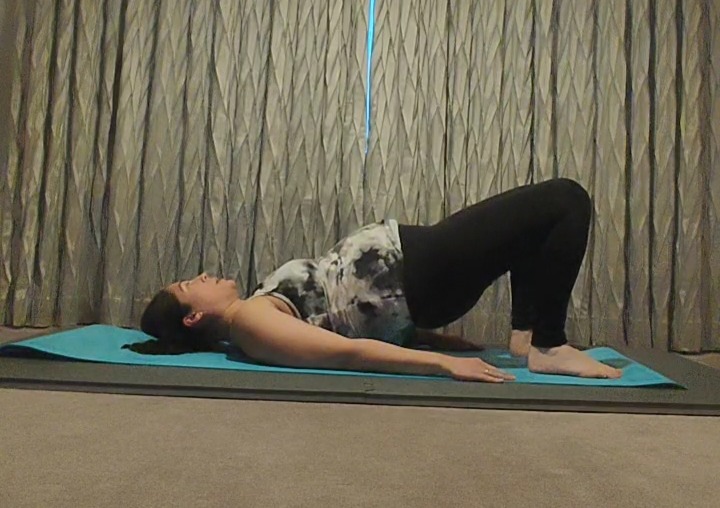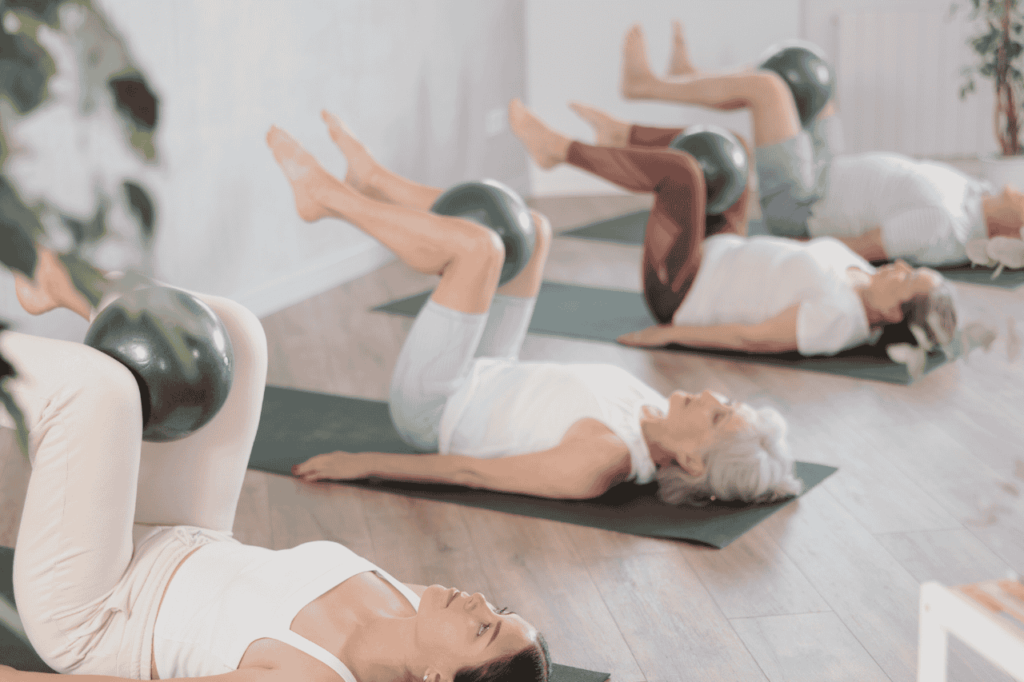The pelvic floor might not be the most talked about muscle group, but it plays a vital role in our overall health and well-being. This group of muscles supports the bladder, bowel and, in women, uterus. It contributes to core strength, posture and stability. Like any other muscle, the pelvic floor needs regular exercise to stay strong and functional throughout different stages of life.
Why Work the Pelvic Floor?
A strong pelvic floor helps prevent incontinence, supports proper organ alignment and enhances core stability. The pelvic floor is an important part of the core muscles, and just like the transverse abdominals and diaphragm, we want to engage the pelvic floor when doing our exercises.
Neglecting these muscles can lead to issues like pelvic pain, prolapse, urinary incontinence and back pain.

During Pregnancy
The pelvic floor supports the growing baby and adapts to the body’s changing weight and alignment. Strengthening these muscles during pregnancy improves stability and helps prepare for labour and delivery, as well as postpartum recovery.
Incontinence can happen during pregnancy, but when the pelvic floor is strong, it can make a huge difference to prevent this happening. TMI coming up, but when I was heavily pregnant, there were only 2 times that I had a little leak when I was bursting for the toilet and happened to sneeze. I know this is because my pelvic floor was strong.
Also, during pregnancy I never had back pain and I know this is because my core as a whole was strong, and as the pelvic floor is part of the core, it needs to be strengthened with everything else to make sure the core works effectively.
After Childbirth
Pregnancy and childbirth place immense pressure on the pelvic floor, often leading to weakened muscles. Strengthening the pelvic floor post-birth is essential for recovery, reducing the risk of long-term issues like incontinence or prolapse.
I had a 3rd degree tear when I gave birth, it destroyed my pelvic floor and this was the first time I truly understood the difference a weak pelvic floor makes. It caused a slight prolapse, it affected my back, I could feel the downwards force on my pelvic floor, it even affected my ability to walk.
Knowing how to engage my pelvic floor from before giving birth made it easier for me to strengthen them again. As I write this, I’m 11 months postpartum and my pelvic floor is still not as it was before, but Pilates has massively helped me regain pelvic floor strength.
During and After Menopause
Hormonal changes during perimenopause or menopause can weaken the pelvic floor, increasing the risk of incontinence and prolapse, as oestrogen levels fall. Regular pelvic floor exercises help maintain muscle tone and support during this life stage.
I don’t have a story with too much information for this yet.

How Pilates Helps
Pilates focuses on the deep core, which includes the pelvic floor. Exercises like bridges, leg lifts, and breathing techniques help activate and strengthen these muscles. Pilates also emphasises posture and alignment, ensuring the pelvic floor is engaged effectively during movement. You want to get to a place where these muscles are working effectively all the time, and Pilates helps that happen.
So, no matter what stage of life you are in, working your pelvic floor muscles is crucial for long-term health, particularly during key life events like pregnancy, childbirth, and menopause. Pilates provides a safe and effective way to strengthen the pelvic floor while improving overall core stability. Incorporating these exercises into your routine can help you feel stronger, more confident and better supported no matter your age.
To get you started, I have created a free Pilates workout video. It gives you a taster session to see how Pilates can help you. To get access, sign up here.
